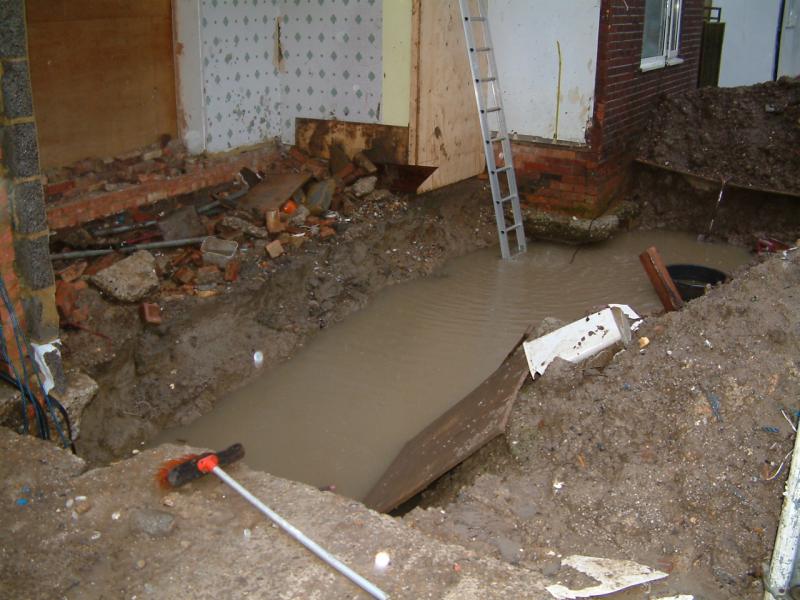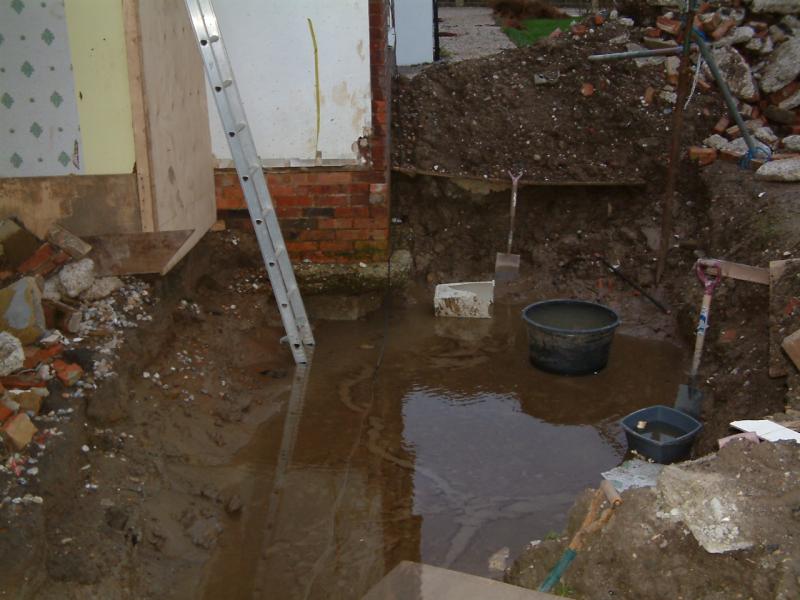I am asking for help here because as you will see, I'd prefer not to contact our building inspector
for advice because I have made an official complaint to the council which is on going.
They are waiting for me to let them know that a "raft" has been constructed.
Extension to front of property with 3m wide x 1.5m deep porch - and the roof
(whole width of property) to be extend to the front.
~~~~~~~~~~~~~~~~~~~~~~~~~~~~~~~~~~~~~~~~~~~~~~~
So, following incorrect advice from our building inspector last September regarding footings
for an extension to the front of our property on "reclaimed beach land", we have been left with
a huge hole at the front, after the land just collapsed under the digger.
The building inspector insisted that we had to employ a structural engineer to determine
a safe way to continue.
We had 3.5 cubic metres of C20 delivered as a base for a reinforced raft to sit on.
The base was tapped perfectly flat - exactly 225mm below the original footings.
This perfectly flat base has caused a problem because there is no run off.
The raft is to be made of shuttering with A142 reinforced mesh sitting 40 mm up from ground level
and A142 mesh positioned 40 mm below top raft concrete level
(to be tucked under existing exposed foundations).
Because the C20 base has basically turned the large hole into a DEEP pool of water because we
have a very high water table (we are 4 inches below sea level) and it really hasn't stopped
raining since October for any decent length of time we cannot get the raft started.
We thought that the C20 base would stop the water table rising from underneath, but the water
seeps out from the sidewalls. So every day since early October the float pump is running for at
least 2 hours every day - the pump removes 144 litres per minute - and it takes 2 hours to
remove the water that rises to just under the existing foundations. I do not let it go above the
bottom the foundations because when it rains I run the risk of it coming into the property.
So the pump is removing around 17,280 litres most days.
The pump has to be turned on manually because the 'float switch' does not turn on/off the pump.
Brought another pump - same problem with float switch.
THIS IS MY PROBLEM
We have attempted to construct the raft on a few occasions, but because the pump drains off the
water down to a depth of 10 mm, and then the reminder of the water has to be scooped up and
removed. This can take over an hour, but you are fighting a losing battle because the water table
is seeping out of the sides of the excavation.
The raft has to be built in situ - as it has to be tucked under the original footings.
Once constructed with the A142 mesh and covered with a removable section so that rain cannot
penetrate - I will not be able to get the pump in the enclosed raft section because of the mesh.
But I still have the problem of the water seeping under the shuttering. So it will fill up the enclosed
shuttering, which will not be OK for the C35 to be delivered.
Once the shuttering is complete, I have to wait for the building inspector - then arrange for C35 to
be delivered and fill the raft. All this could take around two weeks. Plenty of time for the raft to
become not fit to have the C35 delivered.
Have you any suggestions how I might get around this problem.
I have included images of the pond problem.
Many thanks in advance to anyone who has a suggestion how I might overcome this problem.
Regards, Stephen



